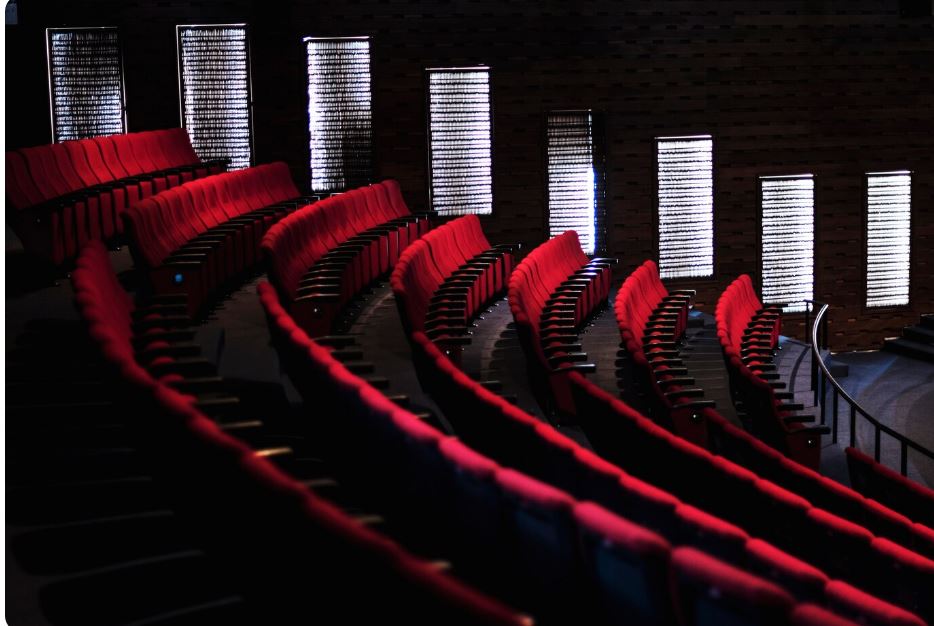
It’s like walking into a spectacle-driven Art Deco cathedral when you sit in Radio City Music Hall. The velvet seats, the curved ceiling, and the golden lighting all seem to have been designed with anticipation in mind. However, many people don’t realize how much the actual location of your seat influences not only your view but also the overall quality of your experience. The Radio City Music Hall seating chart becomes extremely useful at that point.
Despite shifting programming demands and audience expectations, this venue has proven remarkably resilient over the last ten years. Even with its enormous nearly 6,000-seat capacity, the theater maintains an intimate atmosphere thanks to its tiered seating and well-considered acoustics. However, picking the incorrect row can make it difficult to follow the rhythm of the stage or leave you straining for details.
Overview of Radio City Music Hall Seating Chart
| Section | Location | Seat Count (Est.) | Best Use Case | Key Advantage |
|---|---|---|---|---|
| Pit (AAA) | Directly in front of stage | ~150 | Close-up experiences | Extremely intimate for musical or speaking events |
| Center Orchestra | Rows AA–K, mid-floor | ~1000 | Premium concerts or opening nights | Exceptionally clear stage visibility |
| Side Orchestra | Flanking main center rows | ~2500 | Balanced pricing and good sound | Surprisingly affordable, still immersive |
| First Mezzanine | Above Orchestra | ~700 | Balanced views for choreographed shows | Particularly beneficial for Rockettes performances |
| Second Mezzanine | Mid-upper level | ~700 | Overhead view of large ensemble movements | Strikingly similar to a director’s viewpoint |
| Third Mezzanine | Uppermost tier | ~700 | Scenic views, panoramic perspectives | Best place for full-stage visuals and ceiling shows |
| Accessible Seating | Spread throughout levels | Varies | Mobility needs or assisted listening | Highly efficient layout and ADA-compliant |
For instance, the Pit area, designated AAA, is situated right in front of the stage and is frequently considered a destination for bucket listers. Although it’s close enough to see perspiration on a performer’s brow, being too close could feel overwhelming if the show has large props or full-stage choreography. It’s less suitable for productions with a lot of dancing, but it’s especially creative for concerts or one-person shows.
If you have ever witnessed the Rockettes in action, you are aware that part of the magic is their synchronicity. The First or Second Mezzanine seats, which are slightly raised, are the best places to see that kind of performance. Their lines form remarkably geometric patterns that are only visible from above, making the symmetry visually pleasing when seated higher. For that reason alone, the Rockettes themselves have recommended these seats to supporters.
It’s very evident how thoughtfully the hall has been designed. Because of the hall’s subtle raking and curved design, even the Orchestra seats in the back, though less prestigious than those in the center, still have respectable sightlines and sound. The sounds wrap around rather than away, making it feel like you’re sitting in the back of a perfectly tuned theater shell. Seating arrangements became particularly crucial during the pandemic as ticketing practices were altered by spacing protocols. A few feet of difference could have a big impact on a show’s visual and emotional appeal, as audiences soon discovered.
At Radio City, accessible seating—which is frequently relegated to the periphery of venues that are older—has significantly improved. These seats, which are spread out over several levels, provide companion and mobility assistance options without compromising comfort. The venue has created a theater that feels welcoming without sacrificing any quality by incorporating inclusivity into the layout.
It’s common to see well-known faces strewn throughout Center Orchestra rows AA to L during high-profile events like the Tony Awards or Grammy pre-telecasts. Because the stage practically reaches them, celebrities frequently congregate in these central locations for more reasons than just visibility. In addition to being a subtle status signal, it serves a useful purpose. Seats farther back simply do not convey the energy of the performance the way these seats do.
However, when considering value, the side orchestra sections are surprisingly reasonably priced and provide a consistently high level of quality. Locals prefer to visit these locations frequently, especially during events like the Christmas Spectacular. Great sound, comfortable angles, and an affordable price tag make for an incredibly effective balance. They have quietly gained a reputation as the astute option for returning customers.
It’s interesting to note that even though the Third Mezzanine is the one that is most distant from the stage, it has its own supporters. A bird’s-eye view of lighting effects and ceiling projections, which are frequently obscured from the main floor, is provided to viewers from this elevated position. These seats provide complete immersion from a distance during multimedia-heavy performances, which many people don’t anticipate. One scene at a time, it’s like witnessing a painting come to life.
The Radio City seating chart’s ability to effectively translate design into experience is what really makes it so useful. In contrast to many theaters, where “cheap seats” frequently translate into subpar views, Radio City’s design makes even inexpensive options feel interesting. It has a purposefully democratic feel to it, with each row offering potential based on your perspective.
The venue’s team has maintained this seating chart’s responsiveness by utilizing both contemporary event planning and their understanding of historic architecture. Seating arrangements seamlessly adapt to rock concerts, such as Hugh Jackman’s most recent residency. The mezzanine’s bass is said to be as noticeable by fans as the Pit’s. Elevated tiers provide proud families with sweeping views of their loved ones’ significant occasions during ceremonies such as corporate awards or graduation events.
It is important to note that audiences are becoming more intelligent as digital ticketing platforms such as SeatGeek and A View From My Seat expand. To choose locations, they use crowdsourced angles, real-time photos, and review-based insights. The seating chart now plays a role in the decision-making process rather than being a passive visual aid. And Radio City appears to be designed to satiate that curiosity with its incredibly user-friendly layout.
In the end, knowing the Radio City Music Hall seating chart is a step toward a better evening, not just a useful one. Every element of the performance, from legroom to line-of-sight, from acoustics to aesthetics, contributes a unique flavor. Making wise decisions can mean the difference between a memorable performance and a mediocre show. And it’s worth the extra effort to create memories in a place this iconic.
